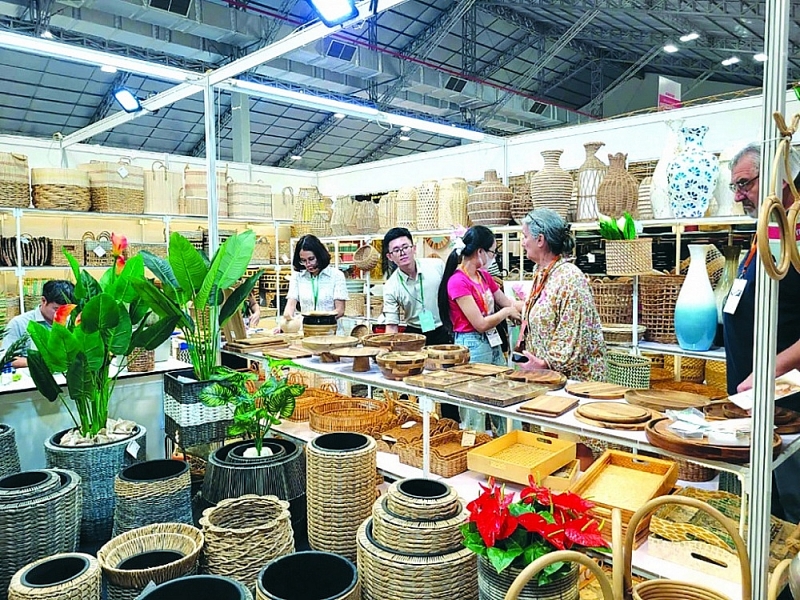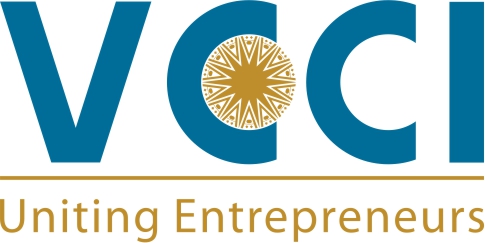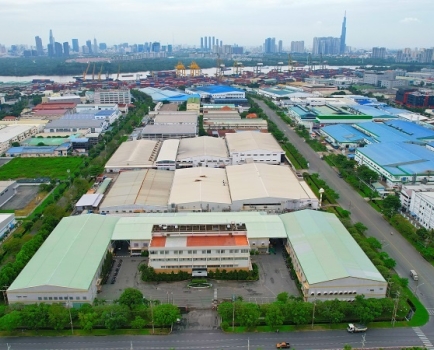Village craft products conquer the world
Thu, 21 Nov 2024 09:57:00 | Print | Email Share:
Vietnam's handicraft products have significant potential to captivate international customers, enhancing export value and revenue.
 |
| Vietnamese handicraft products are favored by international customers. Photo: N.H |
Present in 163 countries
Ms. Nguyen Thi Hoang Yen, Deputy Director of the Department of Cooperative Economy and Rural Development, stated that thanks to government support policies, many localities have implemented plans to preserve and develop craft villages, initially integrating tourism through the development of rural tourism models, tours, and experiential travel routes.
Product design and raw material sourcing have received increased attention. Craft village products have been promoted through storytelling, both domestically and internationally. Many renowned craft villages and skilled artisans have been recognized.
Currently, Vietnamese handicrafts are exported to 163 countries and territories, meeting nearly 10% of global market demand. Between 2015 and 2019, Vietnam's handicraft export revenue achieved an average annual growth rate of 9.5%, rising from 1.62 billion USD in 2015 to 2.23 billion USD in 2019.
According to the Ministry of Industry and Trade, Vietnam's handicraft export revenue reached approximately 3.5 billion USD in 2023, with a target of 4 billion USD by 2025.
Ms. Luong Thanh Hanh, Director of the Nam Cao Silk Cooperative (Thai Binh Province), shared that the cooperative's establishment nearly ten years ago has helped revive the sericulture and silk weaving traditions in Thai Binh. Their silk products are particularly popular with international customers, and the cooperative has secured numerous international orders.
Mr. Vuong Sieu Tin, Vice President of the Binh Duong Ceramics Association, also reported that Binh Duong's ceramic products are widely exported to European and American markets. Notably, in recent months, several major US customers have visited Vietnam to source products.
Mr. Nguyen Quoc Thong, Vice President of the Vietnam Furniture Association, noted that in recent years, OCOP agricultural products have become increasingly popular as gifts for holidays and Tet, replacing imported confectionery. This demonstrates the effectiveness of OCOP product development and the inherent value of these products.
Targeting 6 billion USD in export revenue
Despite significant achievements in international markets, Vietnamese handicrafts are believed to hold even greater potential for expansion.
Mr. Le Ba Ngoc, Vice President of the Vietnam Handicraft Exporters Association (Vietcraft), affirmed the untapped potential of Vietnam's craft villages.
He expressed confidence in achieving the export revenue targets of 4 billion USD in 2025 and 6 billion USD in 2030.
Ms. Luong Thanh Hanh announced the reopening of a Vietnamese silk showroom in Milan, Italy, this December, a city renowned as one of the world's four fashion capitals.
To enhance the export value of handicrafts, Ms. Hanh emphasizes the importance of product innovation and collaborating with international partners to foster creativity.
Mr. Adam Koulaksezian, Representative of the French Business Association in Vietnam, highlighted the opportunity for Vietnam as many distributors in France and the US seek alternative suppliers to China.
The EVFTA further strengthens this advantage, with tariffs gradually reducing to 0% over the next ten years.
According to Mr. Koulaksezian, Vietnam possesses significant advantages in both natural resources and skilled craftsmanship, capable of creating numerous beautiful handicraft products.
However, only a small segment of international tourists are aware of these products. This may be due to limitations in international trade promotion and product branding.
Therefore, in addition to participating in domestic fairs and exhibitions, Vietnamese craft village products need greater exposure at international events.
Building strong brands through storytelling is crucial, showcasing the cultural, historical, and artistic values embedded in each product.
Ms. Nguyen Thi Dieu Hong, Director of Eco Bamboo Vietnam, noted that meeting the new standards of importing countries also creates opportunities for Vietnamese handicrafts. For example, the bamboo material area in Quan Son District, Thanh Hoa Province, has obtained FSC certification for sustainable forest management, significantly increasing the market value and price of bamboo. This is crucial, as factories and craft villages exporting to Europe must utilize FSC-certified materials.
Mr. Nguyen Minh Tien, Director of the Agro Trade Promotion Center, emphasized the importance of online shopping and international market trends, stating, "This presents an opportunity for craft village products to transcend national borders and reach global customers."
Deputy Minister of Agriculture and Rural Development Tran Thanh Nam acknowledged the diverse range of Vietnamese handicraft products, fueled by the creativity of artisans and businesses, and their potential for further market expansion.
However, meeting international consumer standards and preferences requires a high level of aesthetics and creativity in each product, ensuring practicality and functionality.
Therefore, consultation and guidance from international experts on market trends, new techniques, and technologies are essential for artisans to enhance their skills and cater to international demand.
Businesses can also commission vocational training institutions under the Ministry of Agriculture and Rural Development to train skilled workers.
Associations should collaborate with businesses to create catalogs showcasing handicraft products for distribution through Vietnamese embassies abroad, promoting them to international audiences.
By: Customs News
Source: https://english.haiquanonline.com.vn/village-craft-products-conquer-the-world-32162.html
---------------------------------------------
Same category News :













